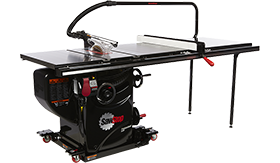Difference between revisions of "Gary's Favorite Robot Arm"
Jump to navigation
Jump to search
| (One intermediate revision by one other user not shown) | |||
| Line 1: | Line 1: | ||
{{#set: | {{#set: | ||
| − | |Is equipment= | + | |Is equipment=False |
|Is located in facility=The Vault | |Is located in facility=The Vault | ||
|Is used in domain= | |Is used in domain= | ||
| Line 32: | Line 32: | ||
==Description== | ==Description== | ||
| − | |||
| − | |||
| − | + | ==Documentation== | |
| − | |||
| − | |||
| − | |||
====Terminology==== | ====Terminology==== | ||
| − | + | ||
| − | |||
| − | |||
| − | |||
| − | |||
| − | |||
==Training== | ==Training== | ||
====Operation==== | ====Operation==== | ||
| − | |||
| − | |||
| − | |||
| − | |||
| − | |||
====Demonstration==== | ====Demonstration==== | ||
| − | |||
====General Procedure==== | ====General Procedure==== | ||
| − | |||
| − | + | ==Safety== | |
| − | |||
| − | + | ==Certification== | |
| − | |||
| − | |||
| − | |||
| − | |||
| − | |||
| − | |||
| − | |||
| − | |||
| − | |||
| − | |||
| − | |||
| − | |||
| − | |||
| − | |||
| − | |||
| − | |||
| − | |||
| − | |||
| − | |||
| − | |||
| − | |||
| − | |||
| − | |||
| − | |||
| − | |||
| − | |||
| − | |||
| − | |||
| − | |||
| − | |||
| − | |||
| − | |||
| − | |||
| − | |||
| − | |||
| − | |||
| − | |||
| − | |||
| − | |||
| − | |||
| − | |||
| − | |||
| − | |||
| − | |||
| − | |||
| − | |||
| − | |||
| − | |||
| − | |||
| − | |||
| − | |||
| − | |||
| − | |||
==Troubleshooting== | ==Troubleshooting== | ||
| − | |||
| − | |||
| − | |||
| − | |||
| − | |||
| − | |||
| − | |||
| − | |||
| − | |||
| − | |||
| − | |||
| − | |||
==Maintenance== | ==Maintenance== | ||
====General maintenance==== | ====General maintenance==== | ||
| − | |||
====Specific Maintenance Tasks==== | ====Specific Maintenance Tasks==== | ||
Revision as of 14:09, 17 February 2022
Make: SawStop
Model: PCS31230
Serial Number: P171131184
Ace: Noah Burlingame (nburlingame18@georgefox.edu).
Location: The Vault
Description
Documentation
Terminology
Training
Operation
Demonstration
General Procedure
Safety
Certification
Troubleshooting
Maintenance
General maintenance
Specific Maintenance Tasks
| Maintenance Procedure | Frequency | Done By |
|---|---|---|
| Lubricate mechanisms | Semester | Sample |
| Clean machine interior | Monthly | Tech |
| Change the blade | As Needed | Tech |
